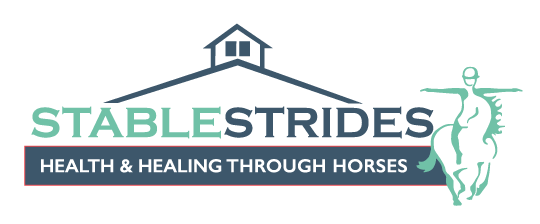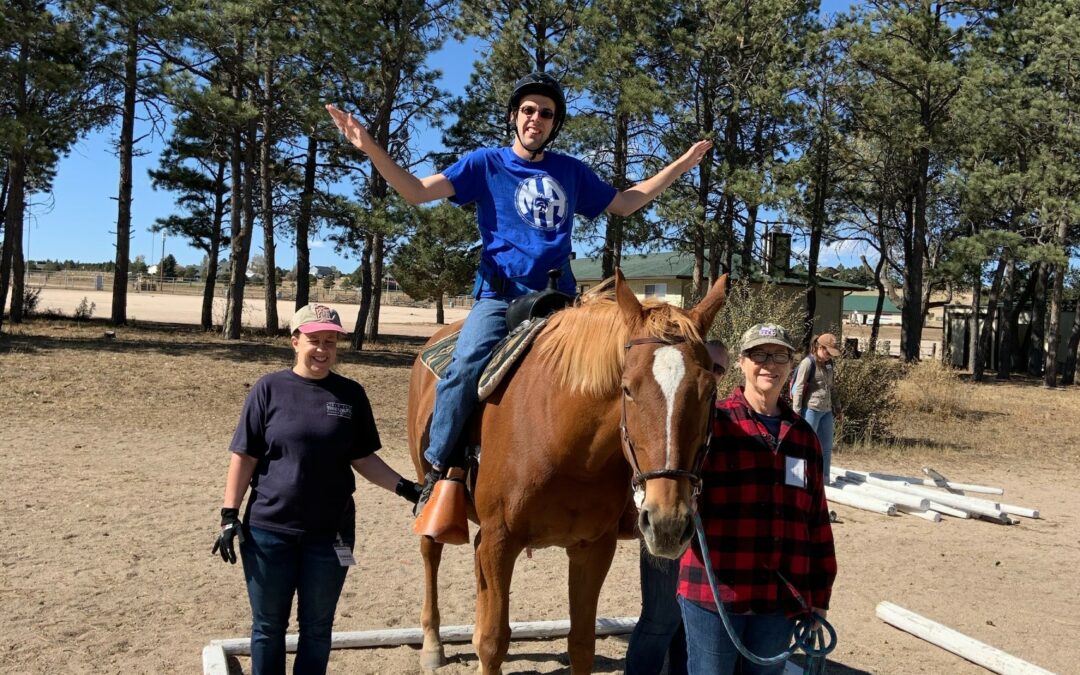You may have caught on, hippotherapy doesn’t involve hippopotamuses. So, what gives?
Hippo is the Greek word for horse. Hippotherapy refers to how therapists incorporate equine movement purposefully as a therapy tool during treatment sessions. These may be physical, occupational or speech therapy sessions. The American Hippotherapy Association (AHA) defines hippotherapy as when “… occupational therapy, physical therapy and speech-language pathology professionals use evidence-based practice and clinical reasoning in the purposeful manipulation of equine movement as a therapy tool to engage sensory, neuromotor and cognitive systems to promote functional outcomes. Best practice dictates that occupational therapy, physical therapy and speech-language pathology professionals integrate hippotherapy into the patient’s plan of care, along with other therapy tools and/or strategies.”
(https://americanhippotherapyassociation.org/what-is-hippotherapy/ )
At StableStrides there are seven therapists from UCHealth Memorial Hospital and Children’s Hospital of Colorado that incorporate equine movement into their patients’ plan of care. After being referred for therapy that incorporates equine movement, the therapists will meet with a StableStrides therapeutic riding instructor to discuss an appropriate horse and suitable tack for the patient. For each patient, a specific StableStrides horse is chosen based on range of movement, temperament and size.
While receiving hippotherapy, the outcomes are numerous though not always seen by the untrained eye. Adult patients build core and leg strength and may improve vestibular functions while mounted. Increased independence and confidence through their relationship with their horse and volunteers often transfers to independence at home. Pediatric patients as young as two years old gain leg and core strength and skills in learning to walk or sit up independently. The movement of the horse stimulates three-dimensional movement to the patient’s pelvis and core, aiding in proper respiration and sensory development. This also stimulates speech and sound production. The equine environment tends to increase engagement in activities and therapeutic goals.
After receiving hippotherapy, patients continue receiving care from their therapist in the clinic, and oftentimes return to StableStrides for continued treatment on the horse in a year’s time. Some patients are discharged from care and referred to StableStrides’ adaptive riding program to continue their time on the horse by learning horsemanship skills.
As a volunteer or participant in hippotherapy at StableStrides, feel free to pass along some of this information to your team members! The American Hippotherapy Association is calling for consistency in terminology. Terms such as “horse therapy” and “riding therapy” have no credible place in healthcare any longer. If you want to learn more about terms to use and terms to avoid, read this article from AHA that introduces and defines many of the commonly used terms in the Equine Assisted Activities and Therapies industry.

By: April Phillips, Marketing Manager


Great blog April!! Love all that Stable Strides does for our clients!
But is it possible that using hippopotamuses would give us some of the same benefits?
Very informative!